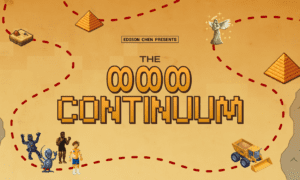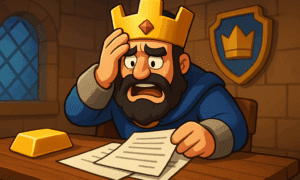Parks are not just green spaces—they’re vital communal hubs that bring people together for recreation, relaxation, and community-building. While grassy fields and playgrounds dominate the landscape, one often-overlooked yet incredibly effective feature is outdoor concrete games. These installations provide durable, low-maintenance entertainment that appeals to children, teens, and adults alike. But which ones work best in public parks?
In this blog, we explore the best outdoor concrete games for parks, why they’re beneficial, how they’re used, and what makes them ideal for diverse community needs.
Why Concrete Games Belong in Parks
Concrete games are permanently installed on or into the park surface, making them vandal-resistant and weatherproof. Unlike portable play equipment, they’re not easily moved, damaged, or lost. The benefits include:
- Durability: Concrete withstands all weather conditions.
- Low Maintenance: Minimal upkeep after installation.
- Accessibility: Many concrete games are wheelchair-friendly.
- Multigenerational Appeal: Games can be enjoyed by kids, teens, parents, and seniors.
These attributes make them perfect for city parks, schoolyards, recreation centers, and community plazas.
Top Outdoor Concrete Games for Parks
- Concrete Table Tennis (Ping Pong)
Table tennis is an energetic, fast-paced game with widespread appeal. Concrete ping pong tables are designed for outdoor use with steel nets and impact-resistant tops. They’re easy to install on patios or near recreation centers and quickly become a hub of activity.
Why it works well:
- Encourages active movement and quick reflexes.
- Popular across age groups.
- Requires minimal equipment (just paddles and a ball).
Tip: Add a paddle and ball rental box or integrate it with a community center for easy access.
- Chess & Checkers Tables
Concrete game tables with etched or embedded checkerboards allow for slow-paced, strategic play. These are often installed in shaded areas or near park benches where seniors and thoughtful players can enjoy leisurely matches.
Why it works well:
- Appeals to all ages, especially adults and seniors.
- Promotes mental sharpness and social interaction.
- Minimal cost—players bring their own pieces.
Enhancement idea: Include a small locker or waterproof container with loaner pieces for community use.
- Four Square Courts
A classic childhood game that can be permanently etched or painted into a concrete surface. Four square encourages movement, social interaction, and coordination.
Why it works well:
- Very low cost to implement.
- Requires only a rubber ball.
- Great for group engagement and adaptable for tournaments.
Pro tip: Include instructional signage for first-time players.
- Hopscotch
Hopscotch is one of the oldest outdoor games and continues to delight younger children. Painted or stamped concrete designs can include traditional number layouts or creative alternatives like animal tracks, space themes, or math-based grids.
Why it works well:
- Simple, fun, and intuitive for kids.
- Great for motor skills development.
- Visually engaging, especially when colorful.
Add-on feature: Use thermoplastic graphics for durability and vibrant colors.
- Concrete Cornhole Boards
This twist on a popular lawn game features heavy-duty concrete platforms with integrated holes. Players toss bean bags onto the sloped boards to score points.
Why it works well:
- No set-up required—boards are always in place.
- Durable in all weather.
- Easy to learn and inclusive for all ages.
Recommendation: Attach a secure bin for storing bean bags.
- Giant Concrete Tic-Tac-Toe
Giant grid boards etched or embedded in the surface allow for creative games using large movable pieces or chalk. These installations work great in playground areas or next to picnic tables.
Why it works well:
- Simple rules mean it’s easy to pick up.
- Can be reused creatively for other games like Sudoku grids.
- Engages both children and adults.
Bonus: Use etched stone or resin pieces that stay in place but are easy to move.
- Maze Paths and Number Grids
These are not traditional games but interactive walking paths built into concrete surfaces. Number grids, alphabet spirals, or animal-themed mazes are fantastic for sensory play and cognitive development.
Why it works well:
- Ideal for toddlers and early learners.
- Encourages movement and education.
- Safe and always accessible.
Design tip: Use tactile or contrasting textures for inclusivity.
- Shuffleboard Courts
Shuffleboard has grown in popularity among younger generations while remaining a favorite among older adults. Concrete courts with smooth finishes and court lines invite relaxed social interaction and friendly competition.
Why it works well:
- Provides a unique activity not found in many parks.
- Inclusive for those with mobility limitations.
- Great for social games and events.
Pro tip: Add shaded seating nearby for spectators.
Making Outdoor Concrete Games a Community Magnet
When choosing outdoor concrete games for parks, it’s important to consider the needs of your specific community. Think about age groups, foot traffic, and whether the area is used for organized events or casual drop-ins.
Tips for Successful Installation:
- Prioritize Accessibility: ADA compliance ensures inclusive play.
- Think About Shade: Many games benefit from nearby trees or pergolas.
- Use Vivid Colors: Especially for games involving kids.
- Install Near Gathering Spots: Position games close to benches, pavilions, or restrooms.
- Include Signage: Instructions help newcomers understand how to play.
- Add Seating: Games are often social—include areas for observers or resting players.
Community Benefits of Outdoor Concrete Games
- Promote Healthy Lifestyles
Games like four square, ping pong, and hopscotch encourage physical activity, which contributes to improved cardiovascular health, coordination, and stress reduction.
- Foster Social Inclusion
From chess tables to shuffleboard, concrete games bring people together. They’re inclusive across age, gender, and ability, fostering a strong sense of community.
- Encourage Intergenerational Play
Kids, parents, and grandparents can all enjoy these games. This bridges generational divides and deepens communal ties.
- Minimize Vandalism
Concrete installations are durable and not easily defaced or destroyed, unlike wooden or plastic alternatives. This helps maintain a tidy, welcoming park environment.
Maintenance and Cost Considerations
Outdoor concrete games require an initial investment, but long-term upkeep is minimal compared to other play structures.
Initial Costs:
- Concrete surfacing or tables: Moderate to high.
- Painting or etching: Low to moderate.
- Accessories (nets, bean bags, chess pieces): Low cost.
Maintenance Needs:
- Routine Cleaning: Pressure wash occasionally.
- Paint Touch-Ups: Repaint or seal every few years.
- Replace Accessories: Offer replacements for community-used gear.
Incorporating games into community volunteer programs or partnerships with schools and senior centers can further offset costs while enhancing local ownership.
Final Thoughts
When thoughtfully installed and maintained, outdoor concrete games for parks serve as evergreen sources of fun, fitness, and fellowship. They’re accessible, durable, and engaging for people of all ages and abilities. Whether your goal is to create a vibrant city square, energize a suburban green space, or modernize a school playground, concrete games are a smart investment in the public good.
So the next time you’re planning a park renovation or building a new community play zone, consider adding concrete games to your blueprint. They’ll bring your park to life—one hop, toss, or checkmate at a time.



































